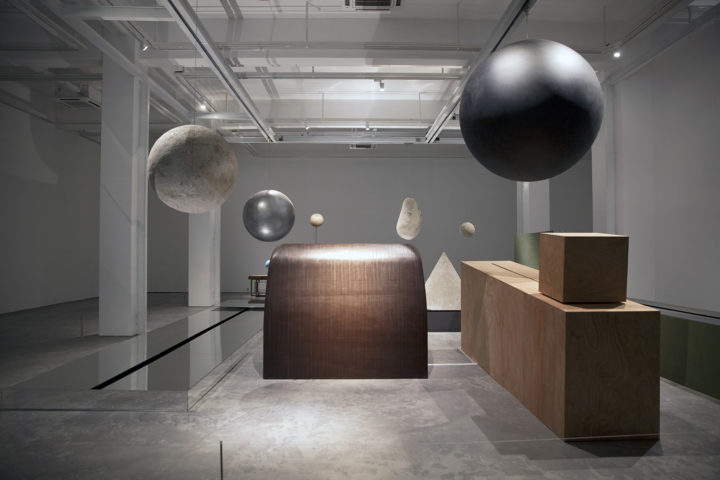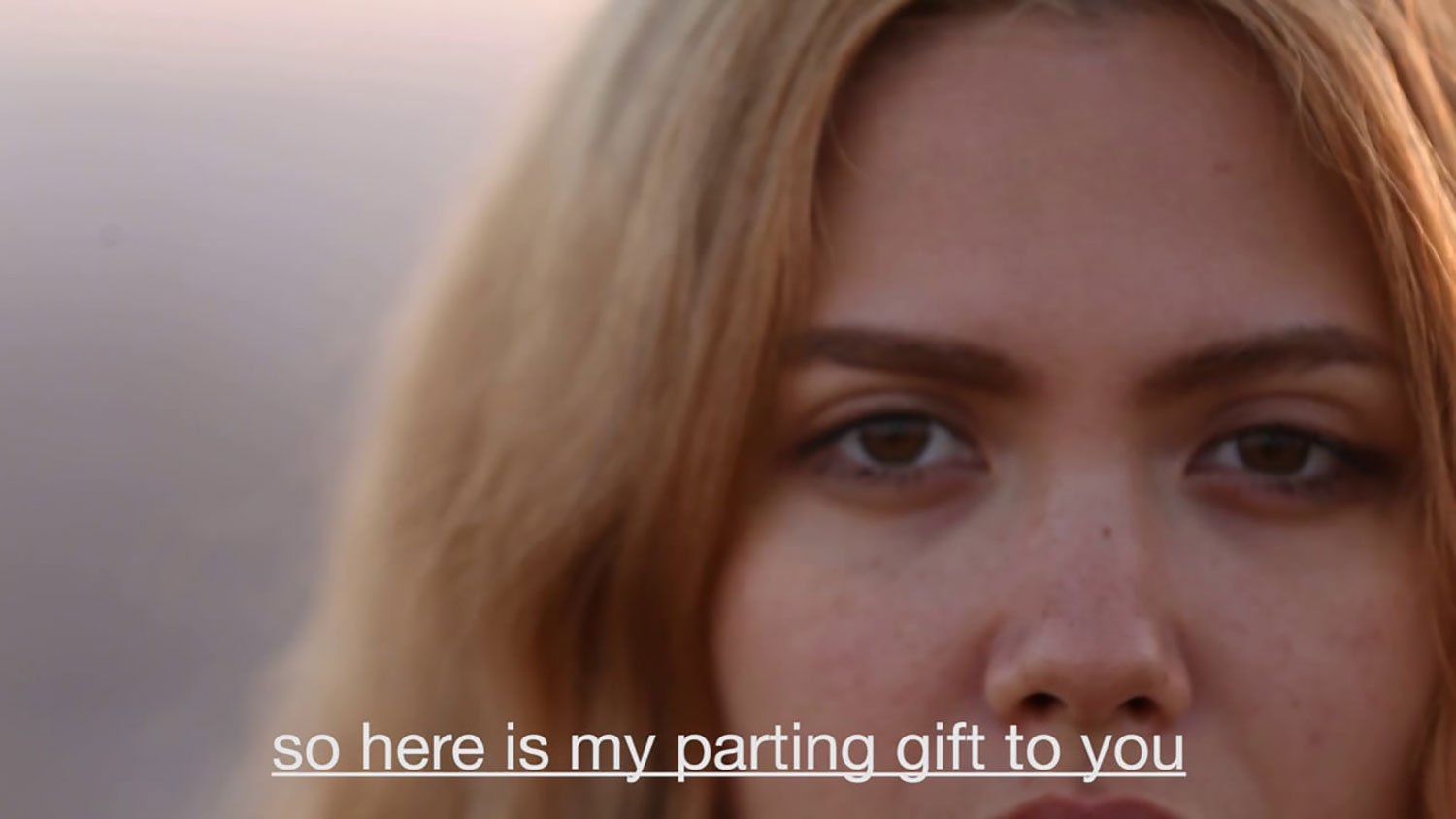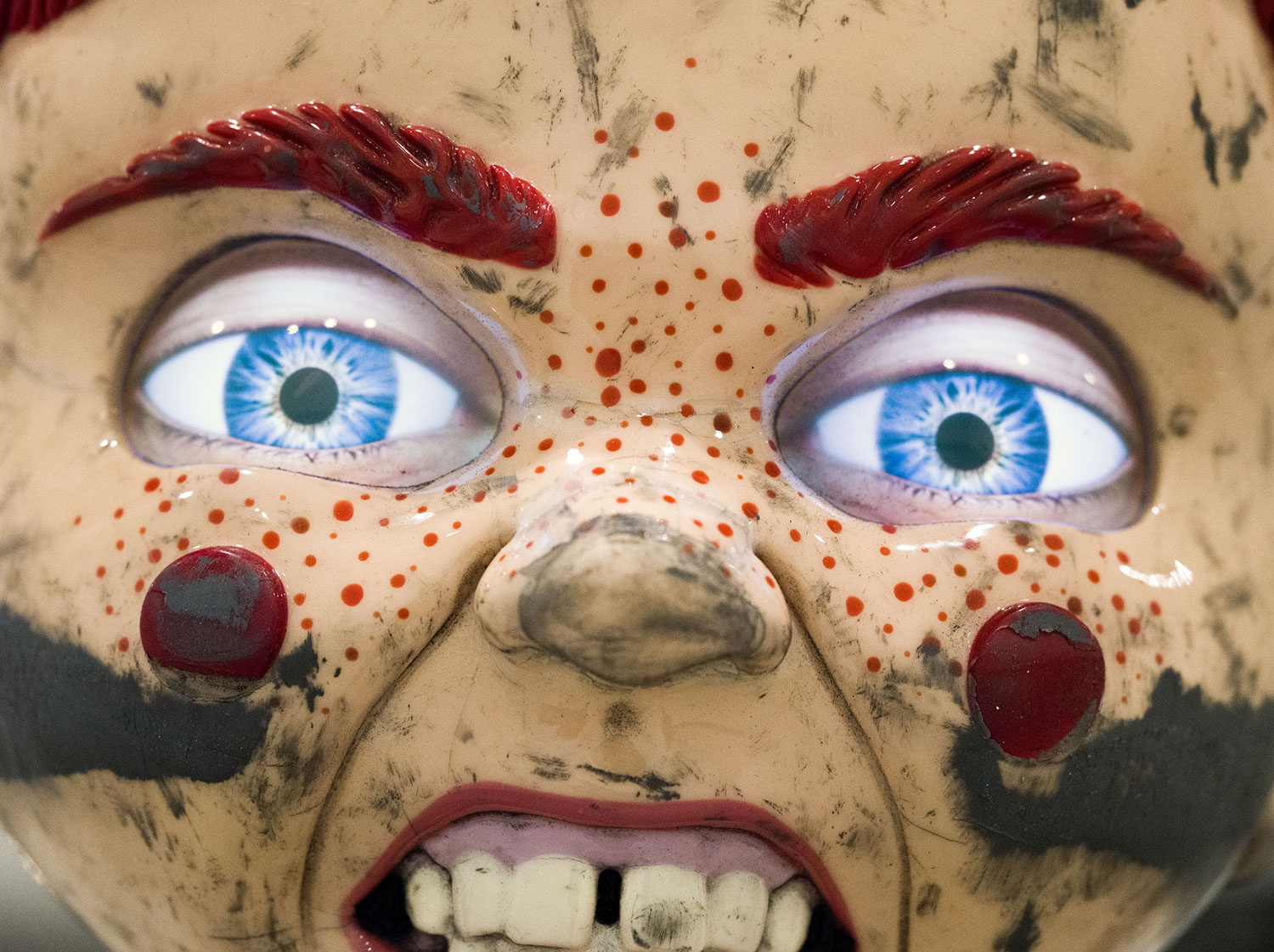Themes of contemporary urban structure and the human condition are the main subjects of the many exhibitions on display at Beijing’s 2018 Gallery Weekend, spread across various galleries and institutions in the 798 and Caochangdi Art Districts. These seemingly independent exhibitions reveal some intrinsic connections to each other, as if a kind of urban fable was being staged.
New York–based Sarah Morris’s first solo show in Beijing, “Odysseus Factor,” occupying the largest room of UCCA, includes all of her cinematographic films, ten colorful diagrammatic-style abstract canvases, posters, and a large customized wall painting. Out of the half-dozen showcases of foreign artists, Morris’s exhibition sits most comfortably in a contemporary Chinese setting, not only because of her eighty-four-minute-long documentary film focusing on the 2008 Olympic Games, but also due to the super-seductive and bizarre appearance of the show, which incorporates gigantic LED screens and flamboyant painted bandings. The surreal conditions revealed in her works interweave the rapidly developing urban landscape with late or state capitalism, and act as a metaphor for bureaucracy in the globalized arena. The works seem to be the absurd juxtaposition of this rapid urbanization and the increasingly restrictive political realities of China in 2018.
Not far from UCCA, Liu Wei’s solo exhibition “Shadows” at Long March Space creates a cosmos-like imagined world of time and space. The exhibition consists of large mechanical installations and two paintings with irregular edges. Among these, Period (2018) occupies the majority of the gallery space and viewers’ attention. Spheres, pyramids, and bricks in cement, wood, or metal, with simple surface colors and textures, move slowly along their respective pathways, structurally supporting each other while crisscrossing perfectly. It could be likened to a simulacrum of the materiality of a city. Airflow (2018), made of cement, resembles colored balloons hanging upside-down. A square mirror is set on the ground, echoing the light from the roof and creating a captivating combination of light and shadow. Dominating spheres oscillate slightly under the influence of gravity, rubbing against each other to create clouds of dust and residue that fall down to the mirror. Liu Wei posits a variety of symbolic significances such as vitality, mobility, and the sense of time.

Airflow, 2018. Courtesy Liu Wei Studio and Long March Space, Beijing.
As last year’s winner of the Hyundai Blue Prize for Creativity, Li Jia has realized her proposal in the brand-new space at Hyundai Motorstudio Beijing in 798. The exhibition, titled “The Precariousness,” showcases recent projects by eight artists and three collectives. Various mediums — videos, installations, drawings, texts, field studies, digital archives, and reading projects — are used to map multiple narratives of social mobility and migration in China. The single-channel video The Destination to Promising Land (2017), by Fang Di, who conducts research between Shenzhen and New Guinea, documents how two Guangzhou-based Africans confront and perceive issues of body, color, and borders on continuously shifting ground and within a global framework. Other projects, Between the 5th and 6th Ring Road in Beijing (2014–15) and Secret Chamber (2016–17) for instance, focus on villagers who live in Beijing’s peripheries, and those who feel dispossessed for their “low added value” to society. Within multilayered representations, the narratives of these pieces as a whole converge a diversity of social and individual forces, gauging how people interact within a constantly fragmented social landscape.
Wang Haiyang’s solo exhibition at White Space Beijing in Caochangdi — a fifteen-minute bike ride from 798 — shows his interest in human secretions, both the physical products of lust and those contingent on the human emotional spectrum. Paintings, drawings, and videos in the exhibition are linked to the artist’s subconscious thoughts of sex, feelings of lust, and attitudes toward his own body while confined to a hospital bed. In Mirror (2017), placed near the entrance, Wang uses spit as a medium to create delicate, cellular-tissue-like forms, and turns them into a stop-motion animation. This corresponds to the series “Mosquito” (2017–18) that hangs on the opposite wall, incorporating different shapes in the imaginary portrayal of a mosquito whose life revolves around the extraction of human blood. A nine-channel video piece, Linkage Mechanism (2017), displays nine mirrored faces chewing gum with their mouths linked together, as if struggling to find an exit in this occluded system. In another room, nearly a hundred skillfully dense watercolors convey the artist’s consciousness and sexual impulse. Of all his works, the drawings are the most instinctual and personal — showing his libidinous yearning and deep understanding of his own life.
In addition, Yin Xiuzhen at Pace Beijing, Paul McCarthy at M Woods, Carsten Höller at Galleria Continua, Liu Xiaohui at ShanghART, Xie Nanxing at UCCA, Richard Deacon at Beijing Commune, and several other group shows that concentrate on emerging artists have sparked plenty of attention and discussion. It seems that Beijing — like Hong Kong and Shanghai — has finally learned how to collectively unleash the energy that it has always embodied.



